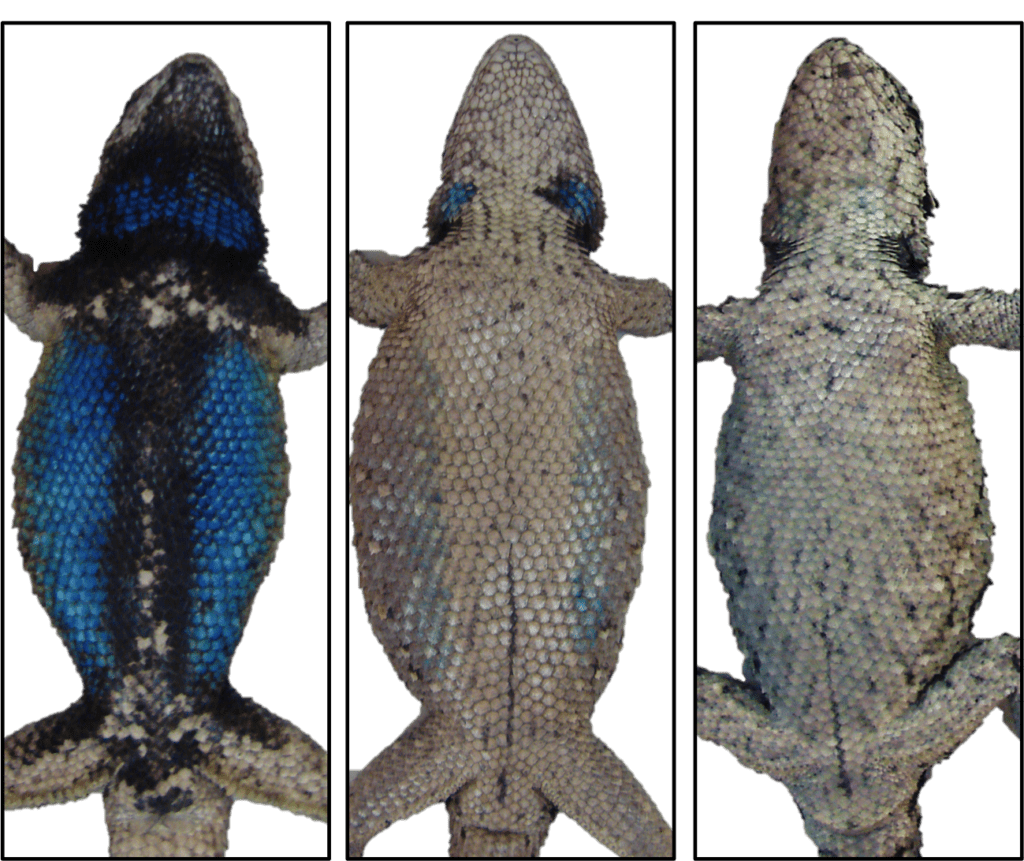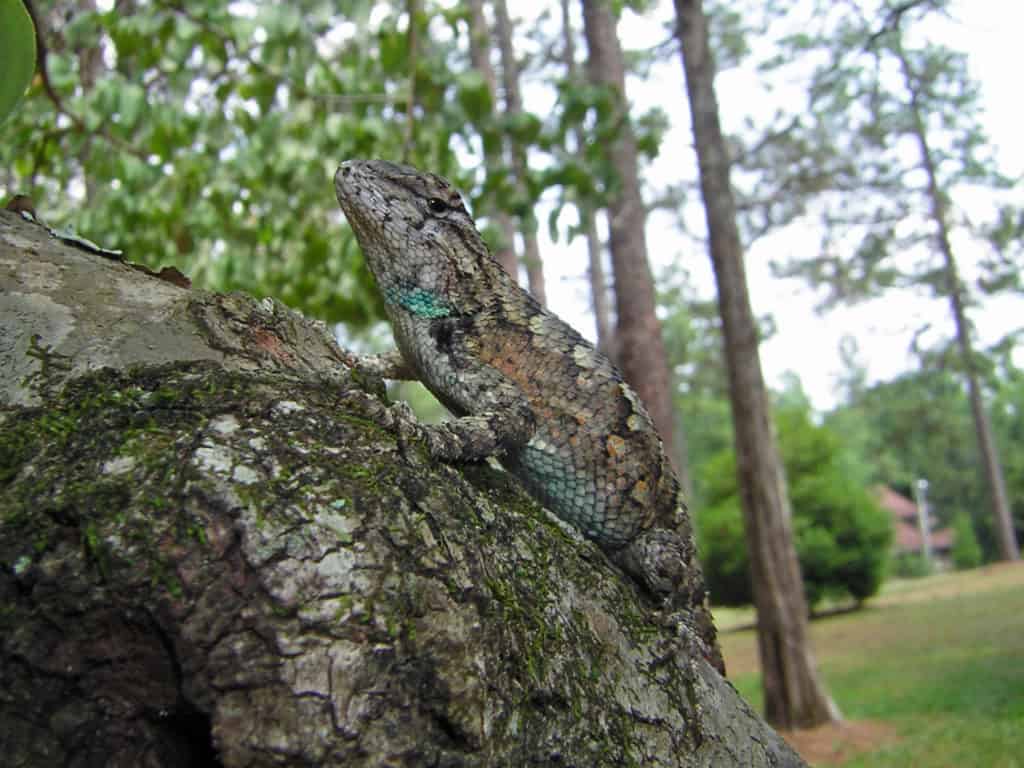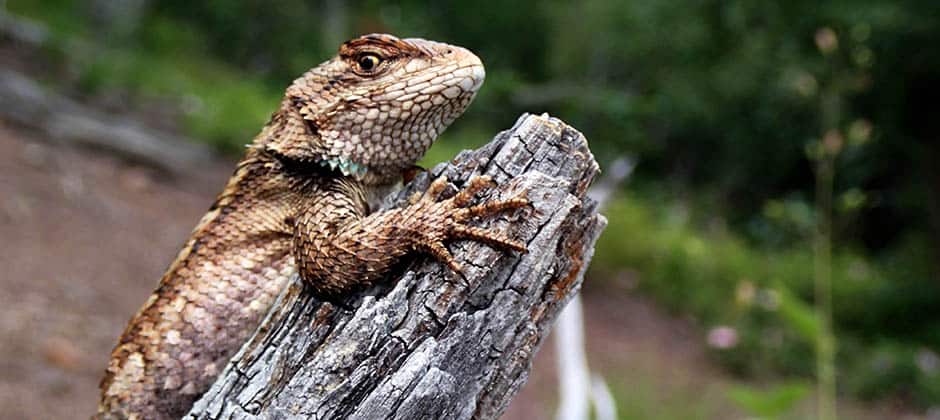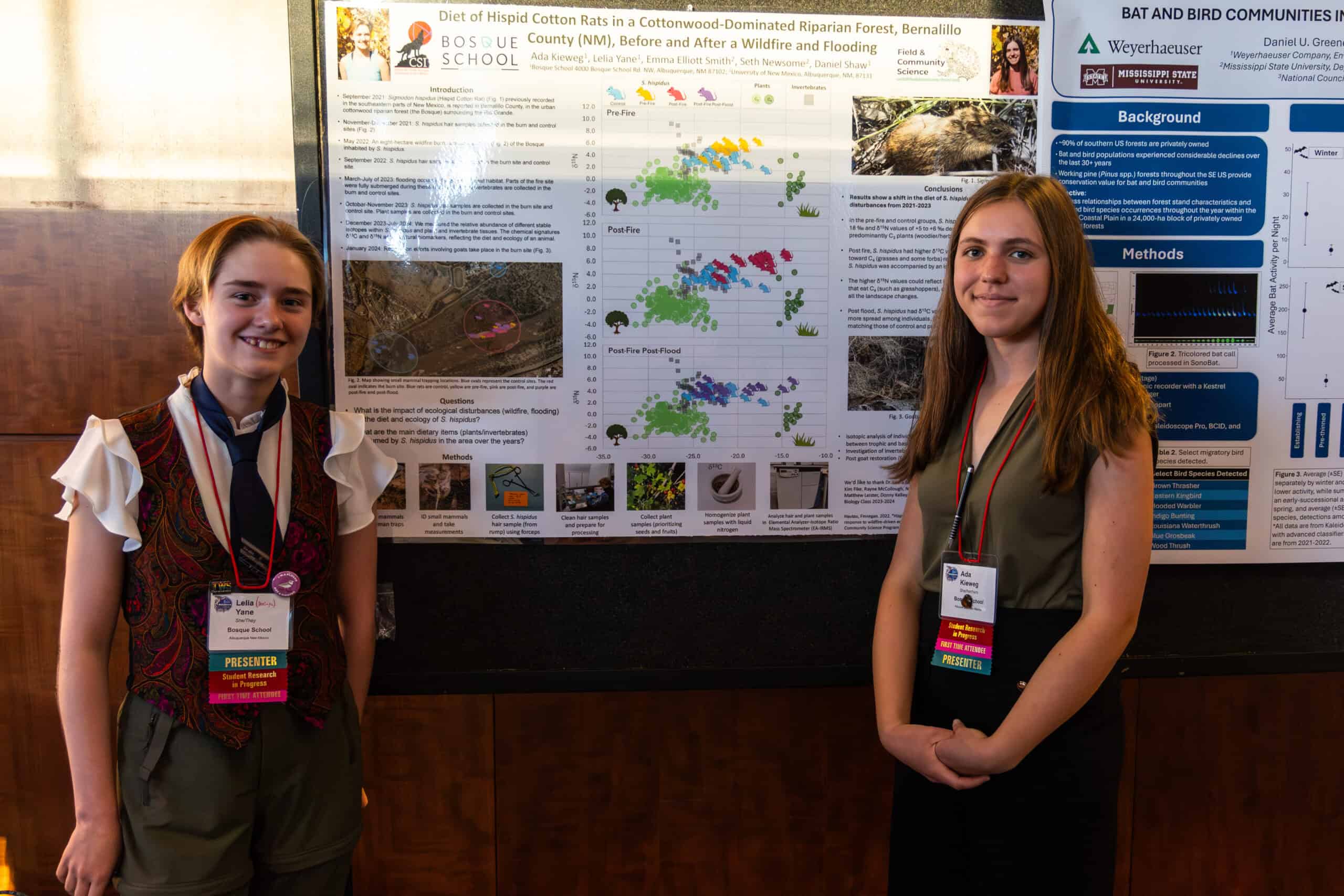Share this article
‘Bearded lady’ lizards raise stronger offspring
Typical female fence lizards (Sceloporus undulatus) sport drab brown colors, but a few of them display the shiny blue neck patches more commonly found on males.
Previous research has shown that these females with male-like characteristics don’t have as much luck finding male suitors in the wild, but a new study suggests they make up for this lack of reproduction by producing better quality offspring.

Caption: From right to left: a male, a female with male-like ornamentation and a stereotypical female. ©Tracy Langkilde
“Males might prefer the unornamented females, but they don’t reject the ornamented ones,” said Tracy Langkilde, the head of the biology department at The Pennsylvania State University and a co-author of the study in the Journal of Zoology. “These typically male ornaments have some costs in females but also some benefits.”
Fence lizards are found across the Southwest. Males sport bright blue and green bellies, while the females are usually brown and beige. But a subset of females displays patches of bright coloring around their chins similar to males, prompting Langkilde and her co-authors to dub them “bearded ladies.”
Noticing that these “bearded ladies” were more common in some areas than others, the researchers wanted to better understand why their traits had become favored in those populations. They analyzed these females’ hatchlings and compared them with the offspring of drabber females. They also compared other characteristics, such as the hatchlings’ sprint speed and responsiveness to predators.
The predator responsiveness tests involved placing adult and hatchlings around the nests of fire ants, which can kill the reptiles. They tapped the fire ant nests to aggravate the insects and watched if the lizards would run away or try evasive maneuvers to get the ants off their back.
These small actions are critical because a small group of fire ants can kill a lizard very quickly by prying up their scales to sting their exposed skin underneath. In this experiment lead author Braulio Assis, a graduate student in biology at PSU, removed the hatchlings before they were killed.

Female lizards with male-like ornamentation have wilier offspring. ©Tracy Langkilde
The researchers discovered that the ornamented females’ hatchlings were a little wiser to predators, fleeing quicker at the threat of danger. This is particularly useful in parts of the lizards’ range, which have a lot of fire ants. Since these insects are invasive, Langkilde said, many fence lizards don’t realize the threat they pose until it’s too late.
Other tests showed that the ornamented females were faster in sprints and their offspring had slightly longer bodies.
An earlier study had shown that males preferred to mate with brown and beige females rather than the ornamented ones. Males even occasionally bite or attack ornamented females just as they would when males encroached on their territory, Langkilde said.
Or they might worry the females will attack them, Langkilde said. “They might think twice about courting these females.”
But this research shows that breeding with ornamented females may result in advantages for offspring in terms of resisting invasive predators like fire ants. The ornamented females and their offspring may survive better in areas with lots of predators — in some areas almost 95 percent of the females have these male-like characteristics.
“In areas where the going’s really tough, the traits are worth it,” Langkilde said.
On the other hand, traditional females may attract mates more quickly in areas with lower amounts of predators.
The authors believe the two different types of female fence lizards may have evolved to deal in different areas with different environmental conditions.
“Under tough environmental conditions, the physiology behind a trait that would otherwise be considered unattractive can in fact make these lizards more competitive and bear offspring that are more likely to survive,” Assis said.
Header Image: Some female lizards have bright colors on their necks – a male-like trait. ©Tracy Langkilde








